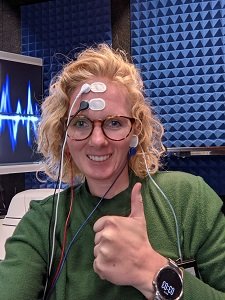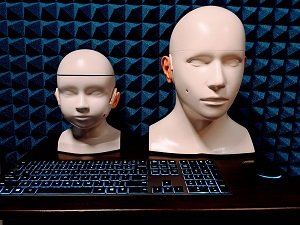Helping your Hearing
 Dr. Sarah Grinn, a faculty member in the Department of Communication Sciences and Disorders, outlines ways to prevent noise-induced hearing loss.
Dr. Sarah Grinn, a faculty member in the Department of Communication Sciences and Disorders, outlines ways to prevent noise-induced hearing loss.
Individuals with hearing loss experience difficulty engaging in conversation with friends, family, and in everyday situations such as understanding speech over the phone, or watching TV. Hearing loss is commonly associated with a sense of social anxiety, loneliness, isolation, depression, frustration, and irritability. Specifically, noise-induced hearing loss is the second most common type of hearing loss (behind age-related hearing loss), and it is the most common work-related injury in the United States, posing a significant economic toll.
Interestingly, some individuals are far more susceptible to hearing loss than others, and this makes it difficult to define the risk of hearing damage from person to person. However, if clinical audiologists could pinpoint an individual's position along the noise-induced hearing loss risk-spectrum, they would be able to personalize hearing health protection and checkup guidelines on an individual basis. This individualized approach would be similar to what is seen in other areas of healthcare, such as recommending that individuals with higher risk of sunburn use  higher SPF sunscreen, or that individuals with higher risk of breast cancer undergo regular screenings at an earlier age.
higher SPF sunscreen, or that individuals with higher risk of breast cancer undergo regular screenings at an earlier age.
Dr. Grinn and graduate research assistants are working to identify red flags for individuals at high-risk of hearing damage so that these populations can be identified early and receive increased protection. Dr. Grinn’s lab is focusing on external-ear acoustical mechanics (shape, size, resonance) and their effect on hearing loss susceptibility. Dr. Grinn collaborates on this project with Dr. Rachael Nelson, a faculty member in the Division of Exercise Science, in order to study cardiovascular influence on hearing loss susceptibility. Dr. Nelson's expertise includes the analysis of blood pressure data and physical activity/exercise interventions aimed at reducing chronic disease risk. Student research assistants from the audiology and exercise science programs collaborate to collect blood pressure data, heart rate data, and advanced auditory test data in the CMU Grinn Hearing Lab.
At CMU We Do Research, We Do Real World
Story by ORGS intern Hailey Nelson
December 2021